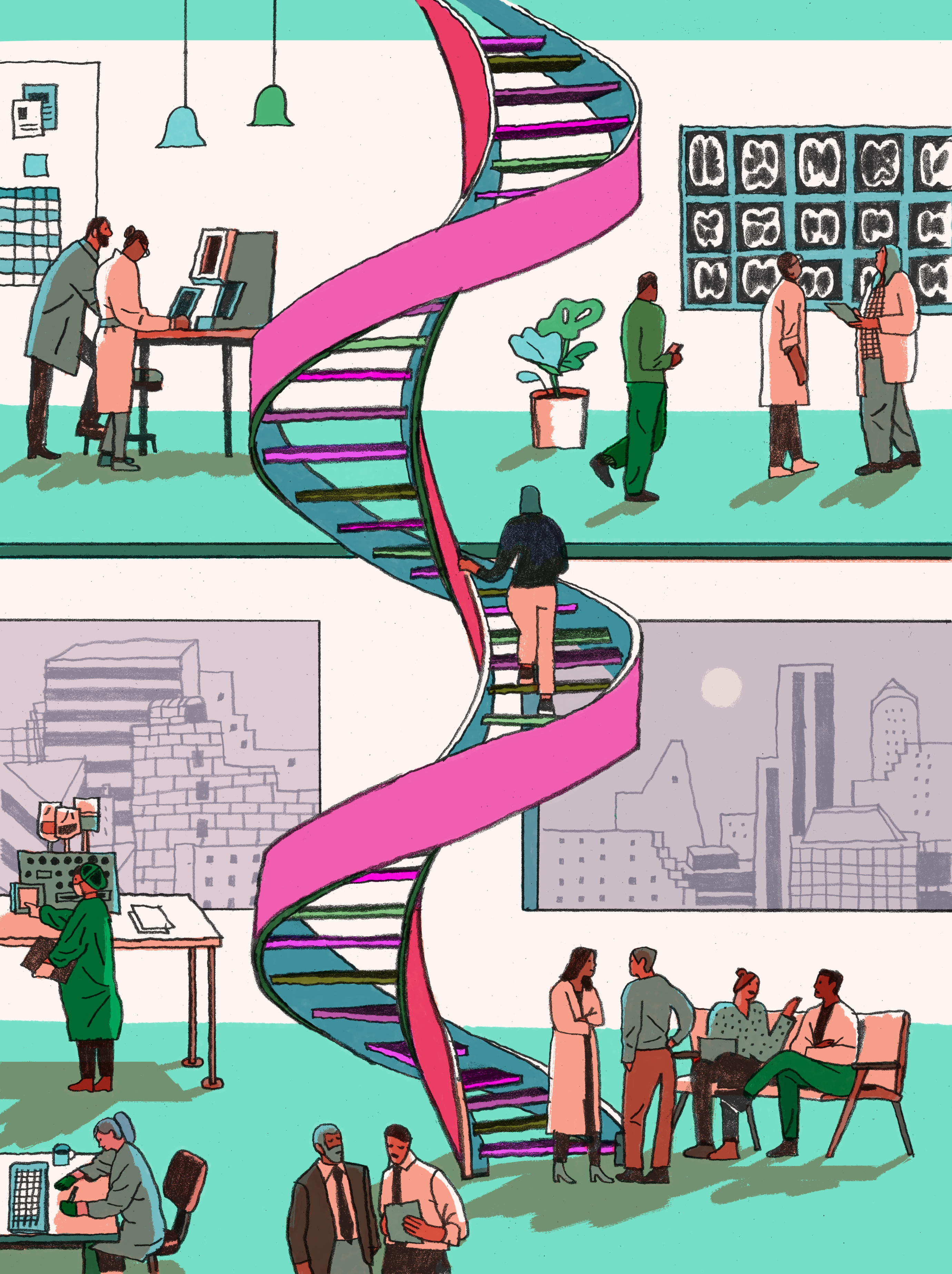CRISPR in 2018: Coming to a Human Near You

Ever since scientists first used CRISPR-Cas9 to edit living human cells in 2013, they’ve been saying that the possibilities for using it to treat disease are virtually endless.
In just the past few years, advances in CRISPR have been happening at a breakneck speed—and companies have sprung up to commercialize the technology. Now, patients in Europe and the U.S. could be treated with CRISPR-based therapies as soon as 2018.
The hope is that CRISPR could be used in a one-time procedure to cure some of the most devastating inherited disorders and cancers, some of which have no or few current treatment options. Scientists want to deploy the technology to fix genetic errors in a person’s DNA, getting at the root of disease.
That might be the dream, but the reality is far different. Already, investigators have delayed the start dates of clinical trials. And the studies slated to start in the next year or two will treat a small number of patients with a few rare diseases. It will probably be years before the technology can be used for more common diseases in more patients.
CRISPR Therapeutics, based in Cambridge, Massachusetts, became the first company to ask permission from European regulators to begin a trial next year. The company will use the gene-editing technology to fix a genetic defect in patients with beta thalassemia, an inherited blood disorder.
Samarth Kulkarni, CEO of CRISPR Therapeutics, says the company is also planning to request approval from the U.S. Food and Drug Administration in the first half of 2018 to begin a CRISPR trial for sickle-cell disease.
About 15,000 people in Europe have beta thalassemia, and around 100,000 in the U.S. have sickle-cell. Both are genetic disorders caused by mutations in the genes that make hemoglobin, an important protein in red blood cells that carries oxygen throughout the body. Typically, both parents must pass on an abnormal gene in order for a child to develop the disease.
Researchers at Stanford University School of Medicine are also moving a CRISPR treatment for sickle-cell to clinical trials. Led by Matthew Porteus, an associate professor of pediatrics, the group will seek authorization from the FDA in 2018 to begin a trial the following year.
CRISPR Therapeutics and Stanford are taking different approaches. Both groups are extracting stem cells from patients’ bone marrow and then altering them with CRISPR. But instead of trying to fix the defective gene in sickle-cell, CRISPR Therapeutics is using the editing tool to make cells produce another protein, an infant version of hemoglobin. The modified cells would then be infused back into patients.
The company is using the same method to treat patients in Europe with beta thalassemia.
In Stanford’s sickle-cell study, researchers will attempt to directly correct the mutation in the hemoglobin gene to convert sickled cells into normal ones. Stanford will carry out the trial in its new Center for Curative and Definitive Medicine. Maria Grazia Roncarolo, director of the new center, says Stanford is planning to open “a number of trials with genome editing” in the next few years. In addition to sickle-cell, Roncarolo says, Stanford is planning additional CRISPR trials for metabolic, autoimmune, and neurogenerative diseases.
But while some trials are moving ahead, others have stalled. The University of Pennsylvania last year signaled its intention to start the first CRISPR study in humans. It got permission from the National Institutes of Health and the FDA to use CRISPR to treat melanoma, sarcoma, and multiple myeloma. The proposed trial would involve removing patients’ T cells, editing them in a lab, and infusing them back into the patients.
But when asked about the status of the trial, a spokesperson for the University of Pennsylvania told MIT Technology Review she could not provide an update on when it would begin. A handful of companies are also trying to modify T cells with CRISPR to treat cancer, but none have announced plans for clinical trials yet.
Editas Medicine, another company based in Cambridge, Massachusetts, has also postponed the start of its first planned clinical trial of a CRISPR-based treatment for a type of inherited blindness. The company said manufacturing issues with the therapy accounted for the delay.
Intellia Therapeutics, yet another CRISPR startup, hasn’t said when it plans to begin clinical trials.
Meanwhile, several CRISPR trials are under way in China, all for different types of cancer, according to listings on clinicaltrials.gov. Researchers there have yet to publish any early results from those studies.
In the U.S. and Europe, 2018 might not be the banner year that CRISPR devotees had been hoping for, but Alexey Bersenev, director of the Advanced Cell Therapy Lab at Yale-New Haven Hospital, says 2019 could see a dozen or so submissions for clinical trials.
“The field is currently over-optimistic about possible results of clinical trials,” says Bersenev, who is also cofounder of the database celltrials.org, which tracks cell therapy trials. “Every new and hot biomedical technology usually undergoes an inflated expectations phase.” He says he wouldn’t be surprised if investigators further delay their anticipated clinical trials.
Deep Dive
Biotechnology and health
How scientists traced a mysterious covid case back to six toilets
When wastewater surveillance turns into a hunt for a single infected individual, the ethics get tricky.
An AI-driven “factory of drugs” claims to have hit a big milestone
Insilico is part of a wave of companies betting on AI as the "next amazing revolution" in biology
The quest to legitimize longevity medicine
Longevity clinics offer a mix of services that largely cater to the wealthy. Now there’s a push to establish their work as a credible medical field.
There is a new most expensive drug in the world. Price tag: $4.25 million
But will the latest gene therapy suffer the curse of the costliest drug?
Stay connected
Get the latest updates from
MIT Technology Review
Discover special offers, top stories, upcoming events, and more.